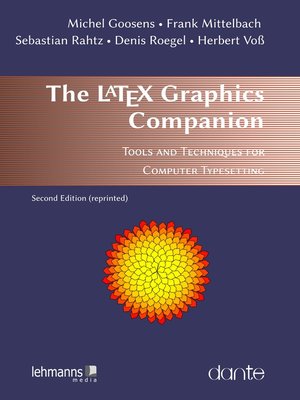The LATEX Graphics Companion
ebook ∣ Tools and Techniques for Computer Typesetting
By Michel Goossens

Sign up to save your library
With an OverDrive account, you can save your favorite libraries for at-a-glance information about availability. Find out more about OverDrive accounts.
Find this title in Libby, the library reading app by OverDrive.



Search for a digital library with this title
Title found at these libraries:
| Library Name | Distance |
|---|---|
| Loading... |
The LATEX typesetting System remains a popular choice for typesetting a wide variety of documents, from papers, journal articles, and presentations, to books—especially those that include technical text or demand high-quality composition. This book is the most comprehensive guide to making illustrations in LATEX documents, and it has been completely revised and expanded to include the latest developments in LATEX graphics. The authors describe the most widely used packages and provide hundreds of solutions to the most commonly encountered LATEX illustration problems.
This book will show you how to Incorporate graphics files into a LATEX document
Program technical diagrams using several languages, including METAPOST, PSTricks, and XY-pic
Use color in your LATEX projects, including presentations
Create special-purpose graphics, such as high-quality music scores and games diagrams
Produce complex graphics for a variety of scientific and engineering disciplines New to this edition:
Updated and expanded coverage of the PSTricks and METAPOST languages
Detailed explanations of major new packages for graphing and 3-D figures
Comprehensive description of the xcolor package
Making presentations with the beamer dass
The latest versions of gaming and scientific packages There are more than 1100 fully tested examples that illustrate the text and solve graphical problems and tasks—all ready to run! All the packages and examples featured in this book are freely downloadable from the Comprehensive TEX Archive Network (CTAN). The LATEX Graphics Companion, Second Edition, is more than ever an indispensable reference for anyone
wishing to incorporate graphics into LATEX. As befits the subject, the book has been typeset with LATEX in a two-color design.







